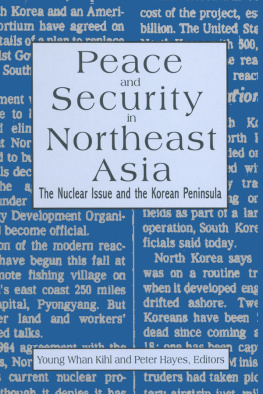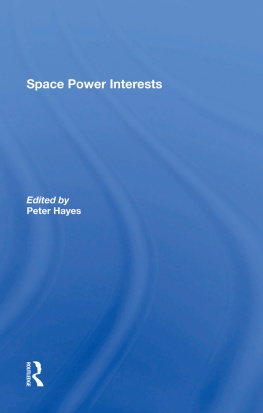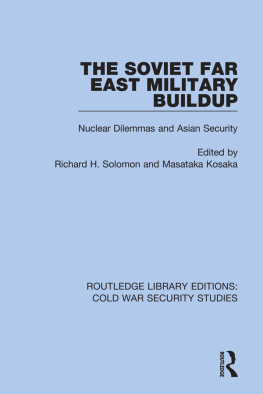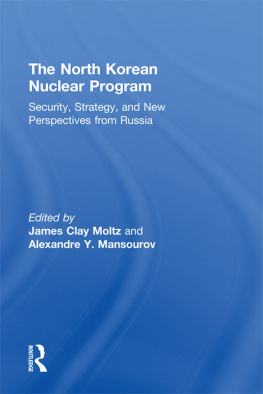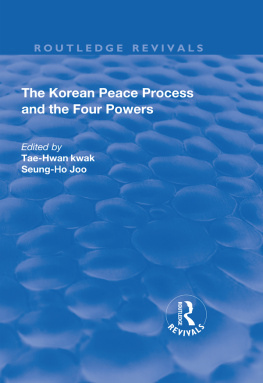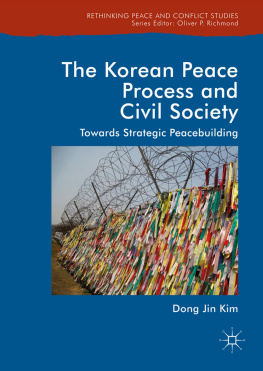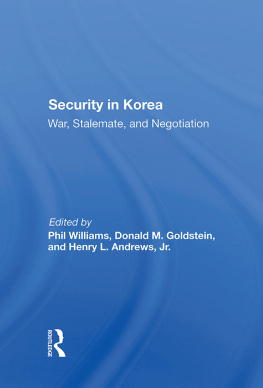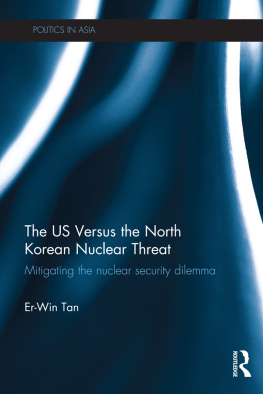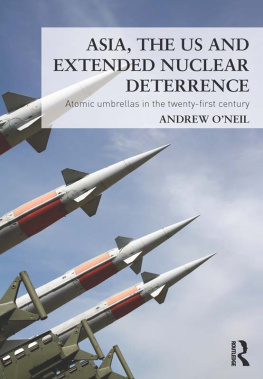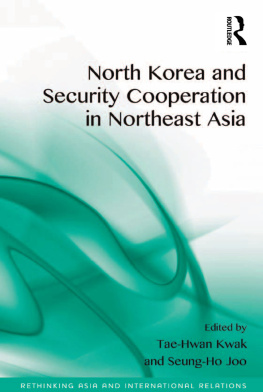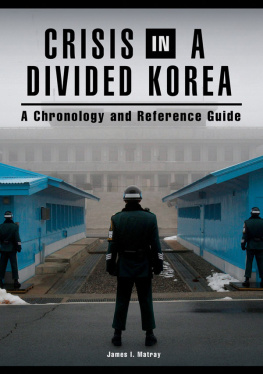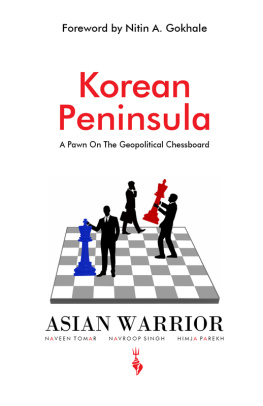Peace
and
Security
in
Northeast
Asia
A Study of The Nautilus Institute
Peace
and
Security
in
Northeast
Asia
The Nuclear Issue and the Korean Peninsula
Young Whan Kihl
Peter Hayes
Editors
First published 1997 by M.E. Sharpe
Published 2015 by Routledge
2 Park Square, Milton Park, Abingdon, Oxon OX14 4RN
711 Third Avenue, New York, NY 10017, USA
Routledge is an imprint of the Taylor & Francis Group, an informa business
Copyright 1997 Taylor & Francis. All rights reserved.
No part of this book may be reprinted or reproduced or utilised in any form or by any electronic, mechanical, or other means, now known or hereafter invented, including photocopying and recording, or in any information storage or retrieval system, without permission in writing from the publishers.
Notices
No responsibility is assumed by the publisher for any injury and/or damage to persons or property as a matter of products liability, negligence or otherwise, or from any use of operation of any methods, products, instructions or ideas contained in the material herein.
Practitioners and researchers must always rely on their own experience and knowledge in evaluating and using any information, methods, compounds, or experiments described herein. In using such information or methods they should be mindful of their own safety and the safety of others, including parties for whom they have a professional responsibility.
Product or corporate names may be trademarks or registered trademarks, and are used only for identification and explanation without intent to infringe.
Library of Congress Cataloging-in-Publication Data
Peace and security in Northeast Asia : the nuclear issue and the Korean Peninsula / Young Whan Kihl and Peter Hayes, editors.
p. cm.
An East Gate book.
Includes bibliographical references and index.
ISBN 1-56324-789-5 (hardcover : alk. paper).
ISBN 1-56324-790-9 (pbk. : alk. paper)
1. National securityKorea (North) 2. Nuclear weaponsKorea
(North) 3. Korea (North)Foreign relationsUnited States.
4. United StatesForeign relationsKorea (North)
I. Kihl, Young, W., 1932 . II. Hayes, Peter, 1953
UA853.K5P34 1996
327.174095193dc2- 96-6318
CIP
ISBN 13: 9781563247903 (pbk)
ISBN 13: 9781563247897 (hbk)
___________________Contents
Robert Scalapino
Young Whan KM and Peter Hayes
Supply of Light-Water Reactor(s) to Pyongyang:
Technological Issues and Possible Solutions
Salomon Levy
Peter Hayes
Leonard S. Spector
Mark J. Valencia
Peter Hayes and Lyuba Zarsky
Kimberly Ann Elliott
Peter Hayes
Peter Hayes and David F. Von Hippel
Young Whan Kihl
Scott Snyder
Alexandre Y. Mansourov
Peter Hayes and Stephen Noerper
Janice M. Heppell
Gerald Segal
Dunbar Lockwood
Ralph A. Cossa
John E. Endicott
Seongwhun Cheon
Dingli Shen
Peter Hayes and Young Whan Kihl
Whatever hazards the future may hold, peace and security in Northeast Asia today depend heavily on developments on the Korean Peninsula. Korea and Taiwanboth legacies of World War II and its aftermathare the two immediate challenges confronting the Pacific region.
In the absence of any institutional peacemaking or peacekeeping structure in this region, and with effective balance-of-power politics rendered difficult if not impossible due to the fragility of all major power relationships, approaches to problems like divided Korea have relied on the construction of ad hoc coalitions or, more precisely, the development of a series of concentric arcs.
In the case of Korea, the first arc has been that of North Korea (the Democratic Peoples Republic of Korea, or DPRK) and South Korea (the Republic of Korea, or ROK). Without a constructive relationship between themor some extreme happening such as collapse or warno genuine solution can be achieved. Above this arc, however, has been a second, composed of the four major powers having a strong interest in Koreathe United States, China, Japan, and Russia. With the first arc largely negative, the actions and inactions of the second arc in recent years have been of critical importance to developments, and generally, the United States has taken the leadership role. A third arc exists in the form of international organizationsboth economic and political-strategic. If greater advances were made in the lower arcs, they could assume a more vigorous role.
The recent interaction of these three arcs constitutes a fascinating picture. Historically, Koreawhether united or dividedhas had three options with respect to external relations: isolation, balancing foreign forces, and alliance with one or more outsiders. Since its emergence, North Korea has at one time or another pursued all three approaches, either singly or in combination. It commenced existence as an ally, more accurately, a clientof the Soviet Union. Later, as the Sino-Soviet cleavage unfolded, it sought to play one power off against the other, with a decided tilt toward China at most points; as problems emerged with both big Communist states, the quotient of isolationnever absentrose, reaching new heights in the 1990s, when the DPRK could count on no trustworthy allies.
The course pursued by South Korea since 1945 has been more consistent. After the disaster of 1950, when the United States misled the Communists as to its commitment to ROK security, the South Korean security alliance with the United States has been firm, although there has been no absence of tension over various issues, especially in recent times when ROK nationalism has risen in company with that of other Asian societies.
Difficulties in North-South relations are not surprising. Although these two societies have a common historical heritage and share certain cultural traits, the developmental gap is huge and still growing. South Korea is the truly revolutionary society, with economic growth having had an enormous impact on politics and culture, including significant generational differences. The North remains a very traditional society in many respects, with only a few modern embellishments such as mass mobilization. Here, worship of the leader, an absence of mobility, and bare subsistence-level livelihood characterize the scene even as the twentieth century comes to a close.
Naturally, the DPRK leadership is reluctant to bring the South too extensively, too intimately into its domain. With per capita income probably one-eighth to one-tenth that of the ROK, and an enormous difference in the amenities of life available, a sudden intrusion of southern life and culture into the North would be dangerous. Thus, united front policies have prevailed over efforts to cement official relations, with an emphasis on recruiting those alienated or sympathetic to appeals for brotherhood.

